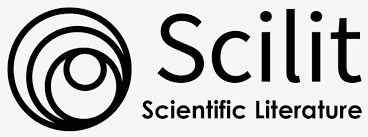Analisis Klasifikasi Broken Home pada Anak Menggunakan Metode Naïve Bayes Classifier
DOI:
https://doi.org/10.14421/jiska.2023.8.2.90-101Keywords:
Broken Home, Classification, Naïve Bayes, Children, Families, YouthAbstract
Broken home is a term that defines a situation in a family where most people handle no harmony, happiness, or peace. The impact of a broken home on a depressed family on children who can experience mental, emotional, and behavioral changes that are uncontrolled and undirected. Therefore, a classification is needed to categorize a child in a family as a broken home or not. The classification process will apply the Naïve Bayes Classifier classification method by taking into account the factors that refer to the statement that a child is called a broken home. With this classification, it is hoped that it can help know what and how a broken home child can be called a broken home and with this classification, it is expected that parents can minimize broken homes in children in the future by paying attention to the determining factors.
References
Ahyani, L., & Astuti, Rr. D. (2018). Buku Ajar Psikologi Perkembangan Anak dan Remaja. https://www.researchgate.net/publication/330577631_Buku_Ajar_Psikologi_Perkembangan_Anak_dan_Remaja
Aisyah, S. H., Bahiyah, K., Prasetiya, B., & Kusumawati, D. (2022). Dampak Keluarga Broken Home Terhadap Psikologis Anak. Al-ATHFAL: Jurnal Pendidikan Anak, 3(2), 75–81. https://doi.org/10.46773/ALATHFAL.V3I2.485
Annur, H. (2018). Klasifikasi Masyarakat Miskin Menggunakan Metode Naive Bayes. ILKOM Jurnal Ilmiah, 10(2), 160–165. https://doi.org/10.33096/ilkom.v10i2.303.160-165
Aziz, M. (2015). Perilaku Sosial Anak Remaja Korban Broken Home dalam Berbagai Perspektif (Suatu Penelitian di SMPN 18 Kota Banda Aceh). JURNAL AL-IJTIMAIYYAH, 1(1). https://doi.org/10.22373/al-ijtimaiyyah.v1i1.252
Faizah, S. K. (2022). Pemahaman Kebahagiaan oleh Remaja Broken Home. Jurnal Bimbingan Konseling Dan Dakwah, 3(1), 28–39. https://jurnal.iairm-ngabar.com/index.php/taqorrub/article/download/188/124
Putro, H. F., Vulandari, R. T., & Saptomo, W. L. (2020). Penerapan Metode Naive Bayes Untuk Klasifikasi Pelanggan. Jurnal Teknologi Informasi Dan Komunikasi (TIKomSiN), 8(2). https://doi.org/10.30646/TIKOMSIN.V8I2.500
Gunarsa, S. D. (2008). Psikologi Perkembangan Anak dan Remaja. BPK Gunung Mulia.
Hafiza, S., & Mawarpury, M. (2018). Pemaknaan Kebahagiaan oleh Remaja Broken Home. Psympathic : Jurnal Ilmiah Psikologi, 5(1), 59–66. https://doi.org/10.15575/psy.v5i1.1956
Maliki, O., & Nanja, M. (2023). Analysis of Family Health with a Combination of Naive Bayes KNN Methods. JTKSI (Jurnal Teknologi Komputer Dan Sistem Informasi), 6(1), 52. https://doi.org/10.56327/jtksi.v6i1.1350
Massa, N., Rahman, M., & Napu, Y. (2020). Dampak Keluarga Broken Home Tehadap Perilaku Sosial Anak. Jambura Journal Community Empowerment, 1(1), 1–10. https://doi.org/10.37411/jjce.v1i1.92
Mistiani, W. (2018). Dampak Psikologi Terhadap Kehidupan Anak Korban Broken Home. Musawa: Journal for Gender Studies, 10(2), 322–354. https://doi.org/10.24239/MSW.V10I2.528
Mustofa, H., & Mahfudh, A. A. (2019). Klasifikasi Berita Hoax Dengan Menggunakan Metode Naive Bayes. Walisongo Journal of Information Technology, 1(1), 1. https://doi.org/10.21580/wjit.2019.1.1.3915
Muttaqin, I., Muttaqin, I., & Sulistyo, B. (2019). Analisis Faktor Penyebab dan Dampak Keluarga Broken Home. Raheema, 6(2), 245–256. https://doi.org/10.24260/raheema.v6i2.1492
Rahayu, T. P. (2016). Determinan Kebahagiaan Di Indonesia. Jurnal Ekonomi Dan Bisnis, 19(1), 149–170. https://doi.org/10.24914/JEB.V19I1.485
Umami, I. (2019). Psikologi Remaja. Idea Press Yogyakarta. https://repository.metrouniv.ac.id/id/eprint/1447/
Wardani, A. K. (2021). Kebahagiaan Anak Broken Home. Jurnal Pendidikan Tambusai, 5(3), 6718–6727. https://jptam.org/index.php/jptam/article/view/2038
Wibawa, A. P., Purnama, M. G. A., Akbar, M. F., & Dwiyanto, F. A. (2018). Metode-metode Klasifikasi. Prosiding SAKTI (Seminar Ilmu Komputer Dan Teknologi Informasi), 3(1), 134–138. https://e-journals.unmul.ac.id/index.php/SAKTI/article/view/2101
Downloads
Published
How to Cite
Issue
Section
License
Copyright (c) 2023 Supiyandi Supiyandi, Almanna Hussein, Irwan Gunawan, William Lutfi Rahman Harjo

This work is licensed under a Creative Commons Attribution-NonCommercial 4.0 International License.
Authors who publish with this journal agree to the following terms as stated in http://creativecommons.org/licenses/by-nc/4.0
a. Authors retain copyright and grant the journal right of first publication with the work simultaneously licensed under a Creative Commons Attribution License that allows others to share the work with an acknowledgement of the work's authorship and initial publication in this journal.
b. Authors are able to enter into separate, additional contractual arrangements for the non-exclusive distribution of the journal's published version of the work (e.g., post it to an institutional repository or publish it in a book), with an acknowledgement of its initial publication in this journal.
c. Authors are permitted and encouraged to post their work online (e.g., in institutional repositories or on their website) prior to and during the submission process, as it can lead to productive exchanges, as well as earlier and greater citation of published work.










